JOIN the AFICIONADOS
To receive our world of travel and style delivered straight to your inbox.
Although we associate the Alps with tradition, it’s also a hotbed of radical innovation as seen in our lineup of cool mountain architecture by some of our favourite architects, artists and designers.
Read on for mountain eye-candy of style in the Alps from super cool ski stations, architectural alpine cabins, thought-provoking art installations to standout sharp viewpoints.
Topping Mount Wiedersberger Horn in Austria’s Tyrolean Alps, Norwegian architects Snøhetta have created ‘Top of Alpbachtal’, a timber-clad viewpoint designed to enhance skiers experience by providing shelter and a panorama over the surrounding snow-dusted peaks. Commissioned by the Ski Juwel Alpbachtal Wildschönau ski area, the new timber beacon sits by the Hornbahn2000 cable car.
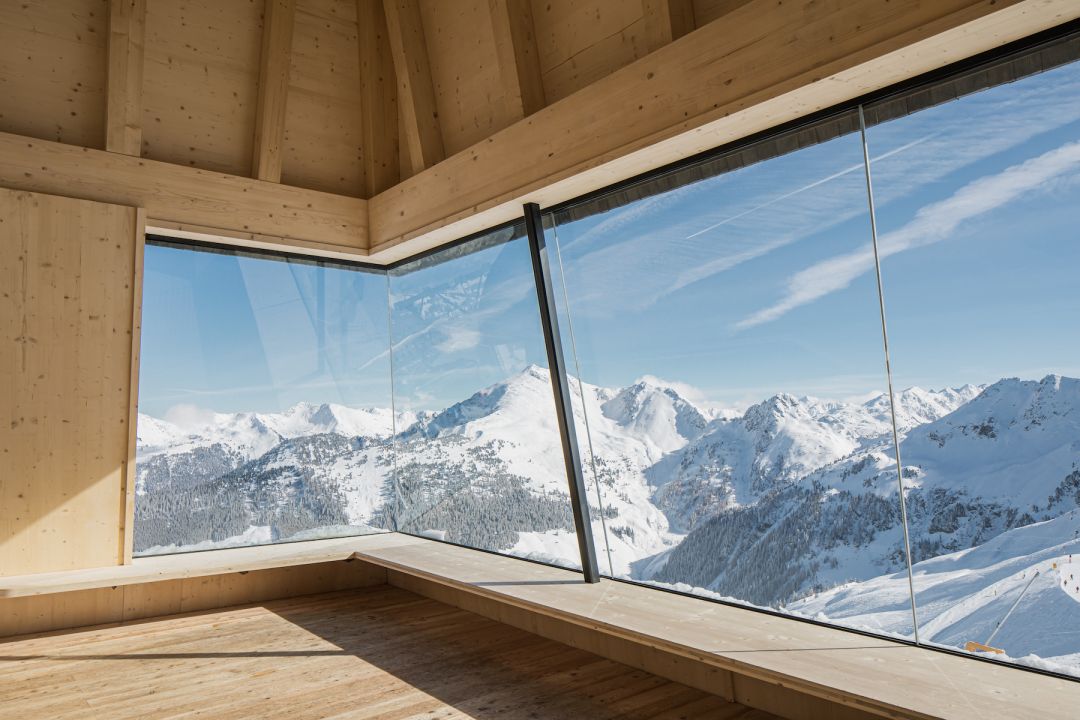
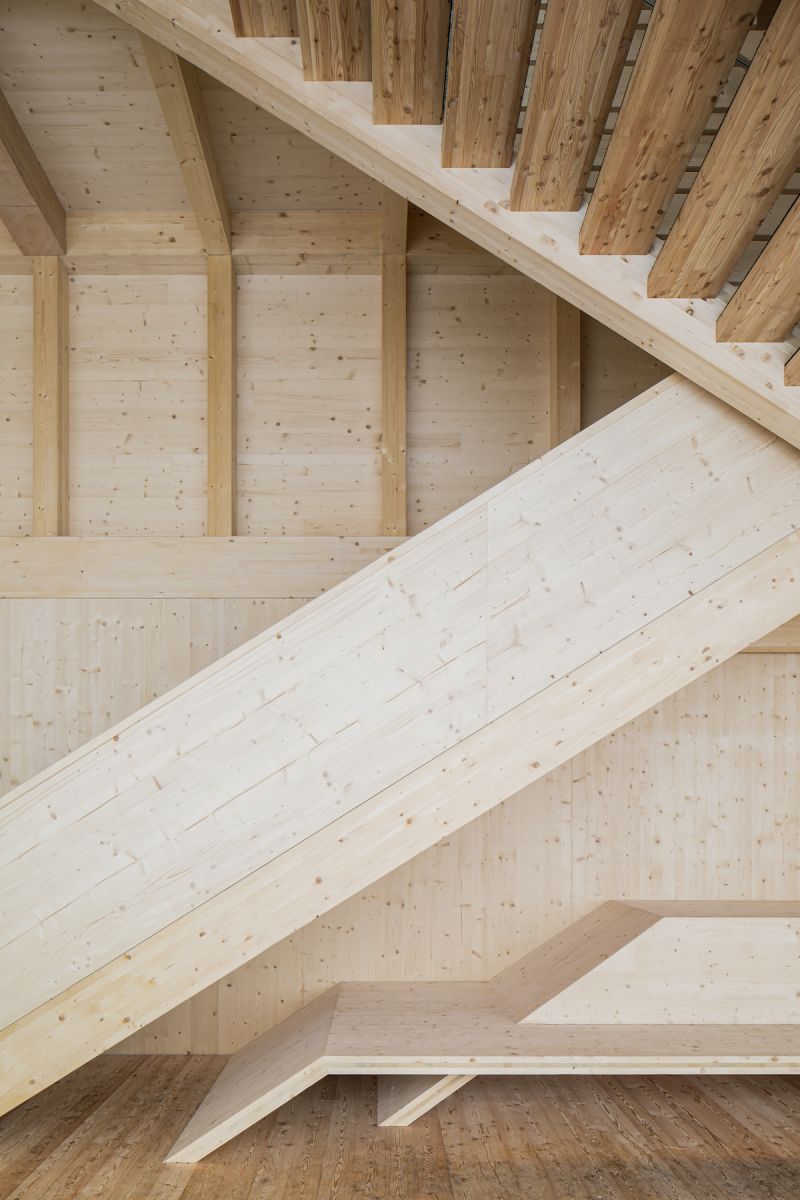
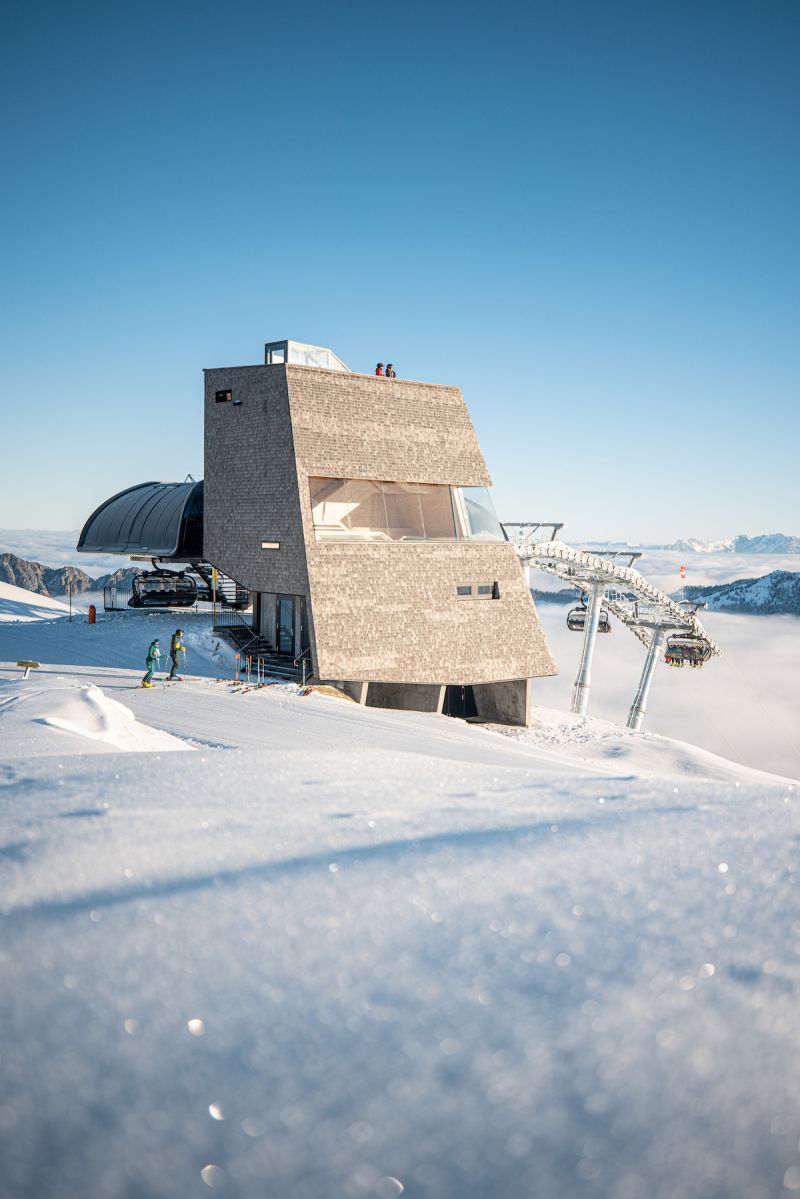
With a façade made up of wooden shingles crafted by a local wood worker, the Top of Alpbachtal references traditional alpine design where wooden tiles are layered over one another for durable protection against the elements. It also creates a uniform aesthetic which works well with the angular modern design and sleek panel of horizontal glass, allowing for a minimalist ‘watchtower’ concept to emerge.
In a landscape made up of craggy cliffs and jagged peaks, this spherical art installation atop the Hochjochferner in South Tyrol glacier stands out. Which was artist Olafur Eliasson’s intention as this globe-shaped sculpture named ‘Our Glacial Perspectives’ crowns a glacier threatened by climate change.
The installation located on Mount Grawand, is inspired by the traditional armillary sphere, an artefact created in 16th century with different rings to monitor the sun, moon and stars, and therefore time. Eliasson’s version has multiple steel rings and tinted blue glass, with a viewing panel so visitors can engage with glacial perspectives and measure time. Thepathway to the installation has ten hoops, five of which represent the Earth’s ice ages. Contemplating the vastness of the landscape against the minute ticking of the clock brings our rapidly warming world into stark focus.
Corten steel wraps around the summit of Ötzi’s peak, 3251 metres above sea level and the place of discovery - the most famous glacier mummy in the world, iceman Ötzi. This project was for the architecture and interior design studio NOA (Network of Architecture) based in Bolzano, who designed the floating observatory deck called Ötzi Peak 3251m on the Schnalstal Valley Glacier in South Tyrol.

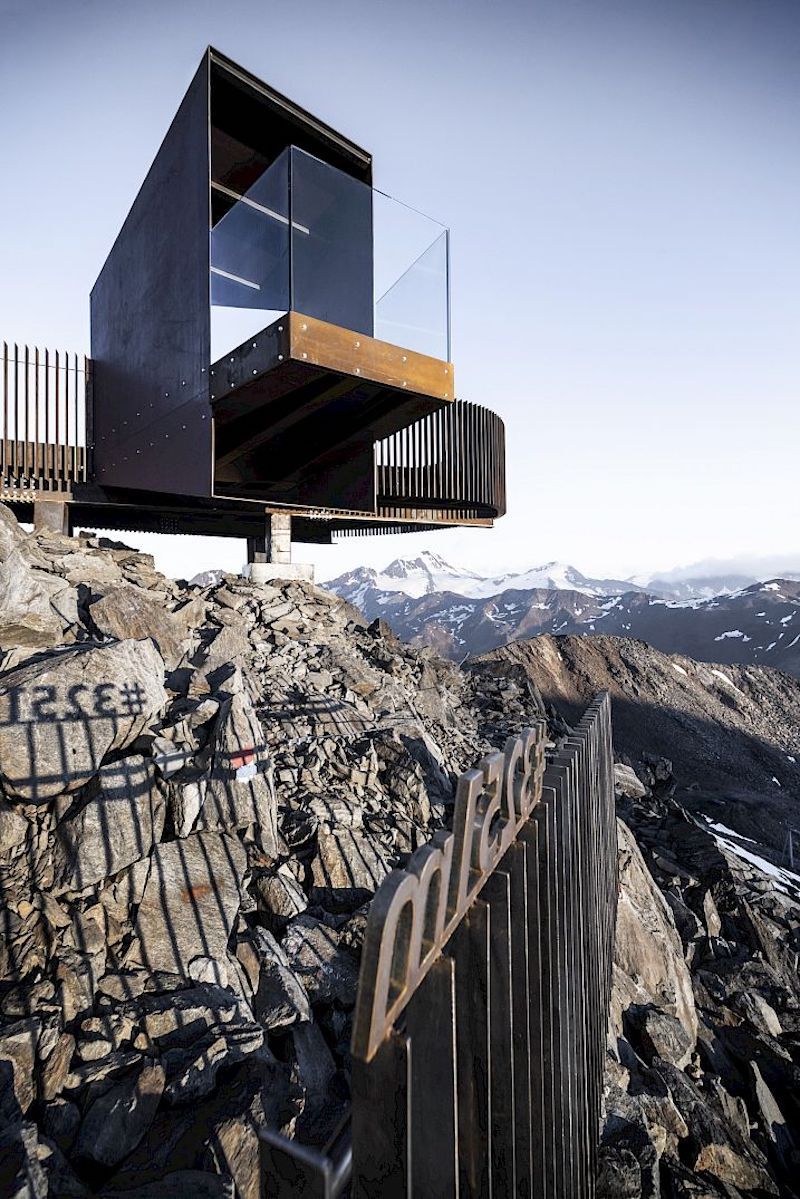
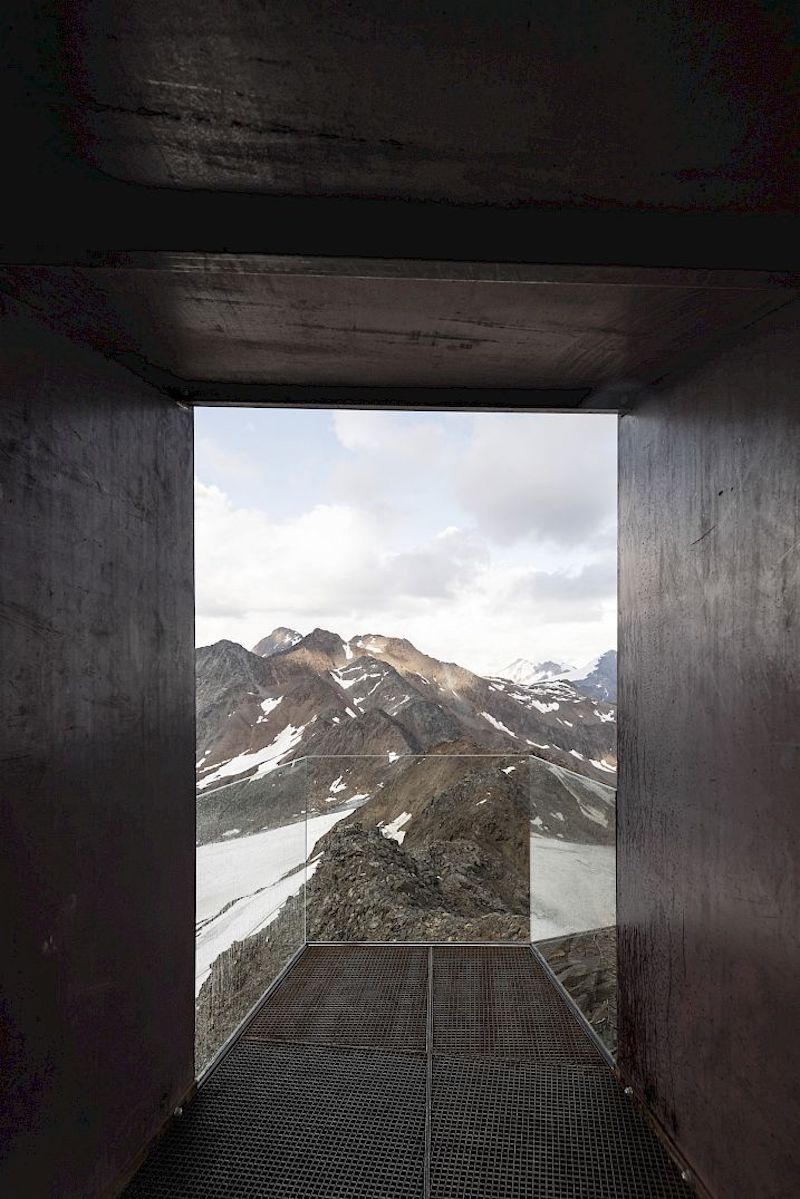
Perched on rocky ground, Ötzi Peak 3251m blends into the existing summit cross with a light footprint, only secured where necessary. This also creates a freeing, up-in-the-clouds experience for visitors, paired with the weathered steel which reflects the exposed nature of the environment and does not detract from the mountain panorama. There is also a nod to our favourite iceman Ötzi with a carved-out funnel which directs the eye to the glacier where he was discovered.
Mountain refuges have been around for as long as we’ve explored altitudinous peaks, but as well as a place of shelter, they reflect our interest and advancements in alpine architecture.
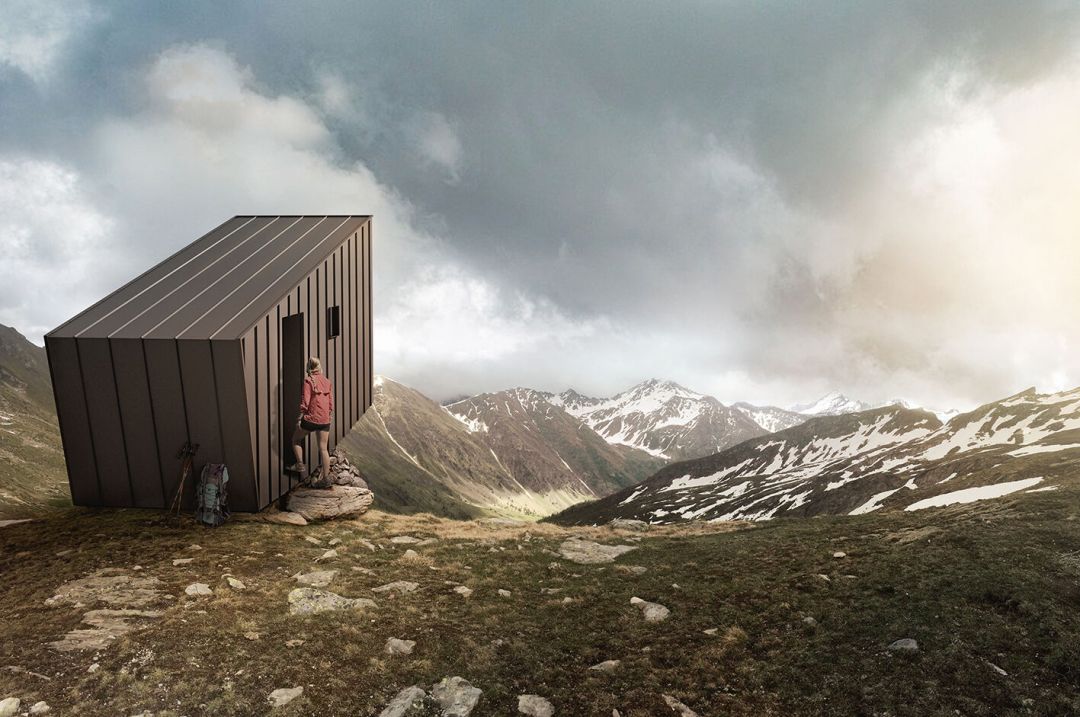
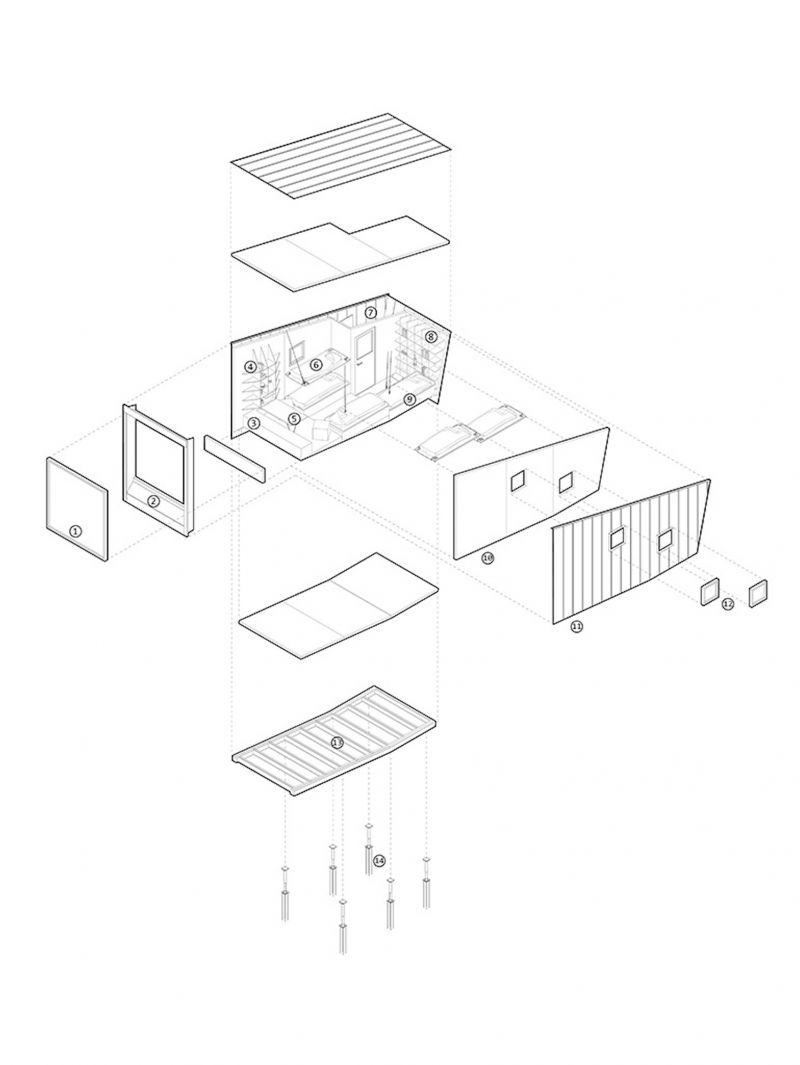
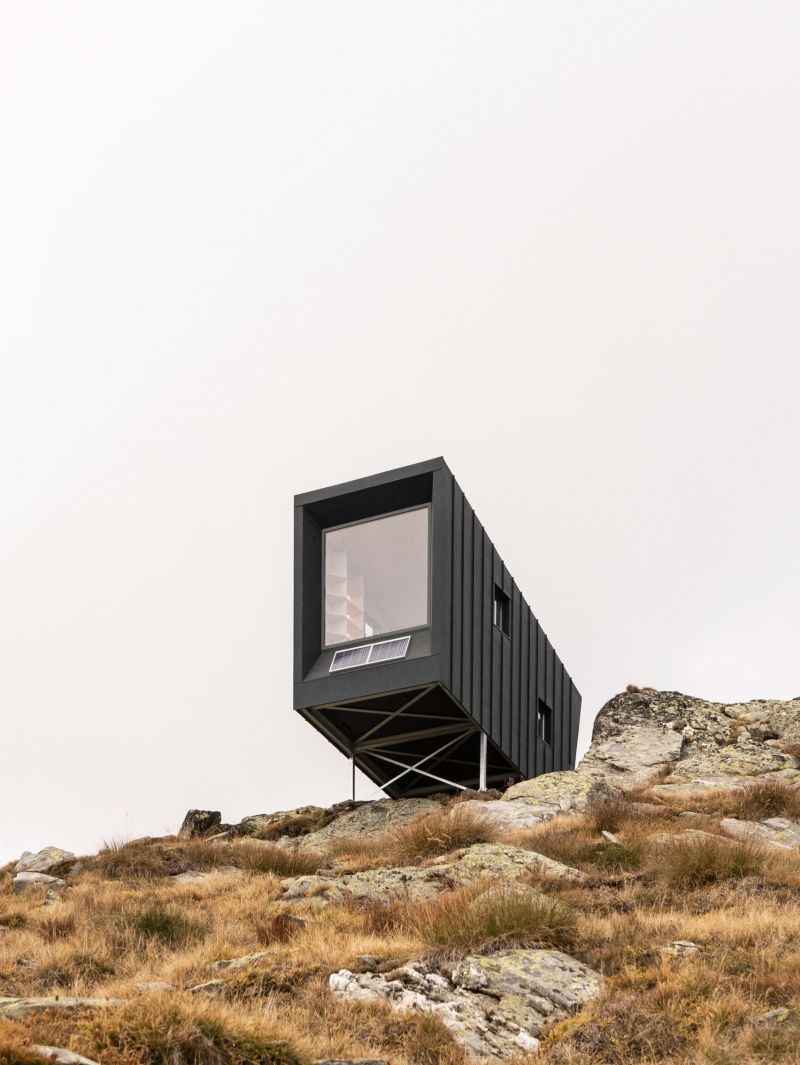
In northwest Italy’s region of Valle d’Aosta, architectural studio and sustainable designers BCW Collective have experimented with form and function with an aluminium-clad cantilevered cabin that hangs over a rocky slab, anchored by a metal frame and insulated in wood. Created as a memorial to politician and alpinist Claudio Brédy, who sadly lost his life in a climbing accident, the cabin creates a safe resting place for climbers as well as a glazed orientation for mountain contemplation.
Plans in the making are with our favourite Milan-based architects, Peter Pichler Architecture to oversee the new design of a ski station in Ponte di Legno in Italy. A sleek pitched-roof structure will house three cable lines as well as create room for a cultural centre that will showcase the region’s heritage and the preservation of World War 1 tunnels that were found near the site.
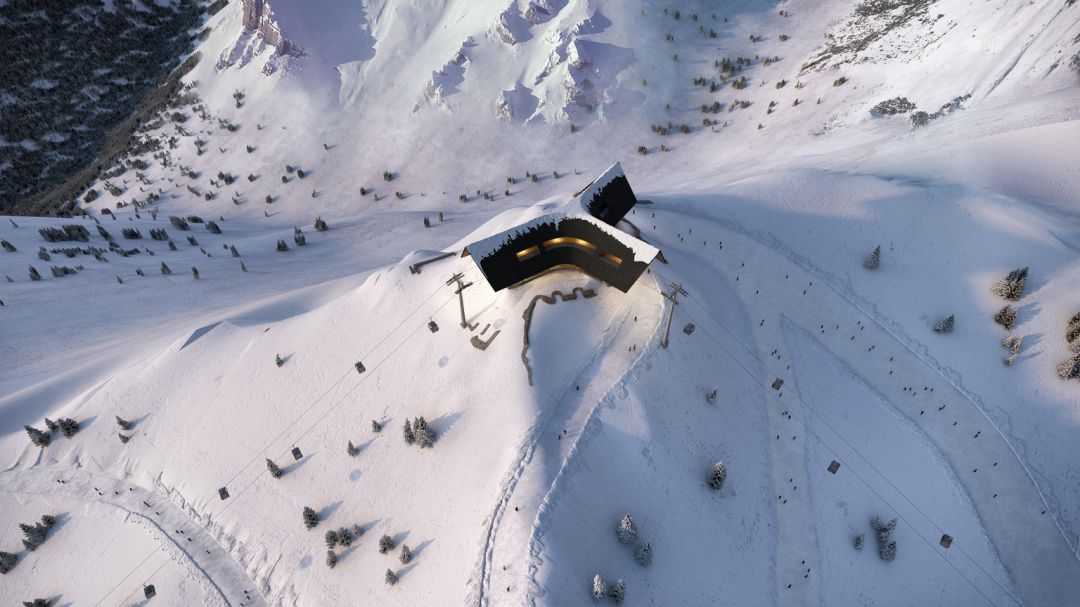
The design aims to merge the structure naturally into the environment; with panels of glass facing altitudinous views to enhance the journey of the individual on their ascent up the mountains as well as muted timber interiors to allow the topography to sing. In keeping with PPA’s dedication to sustainability, natural materials of wood and stone take centre stage.